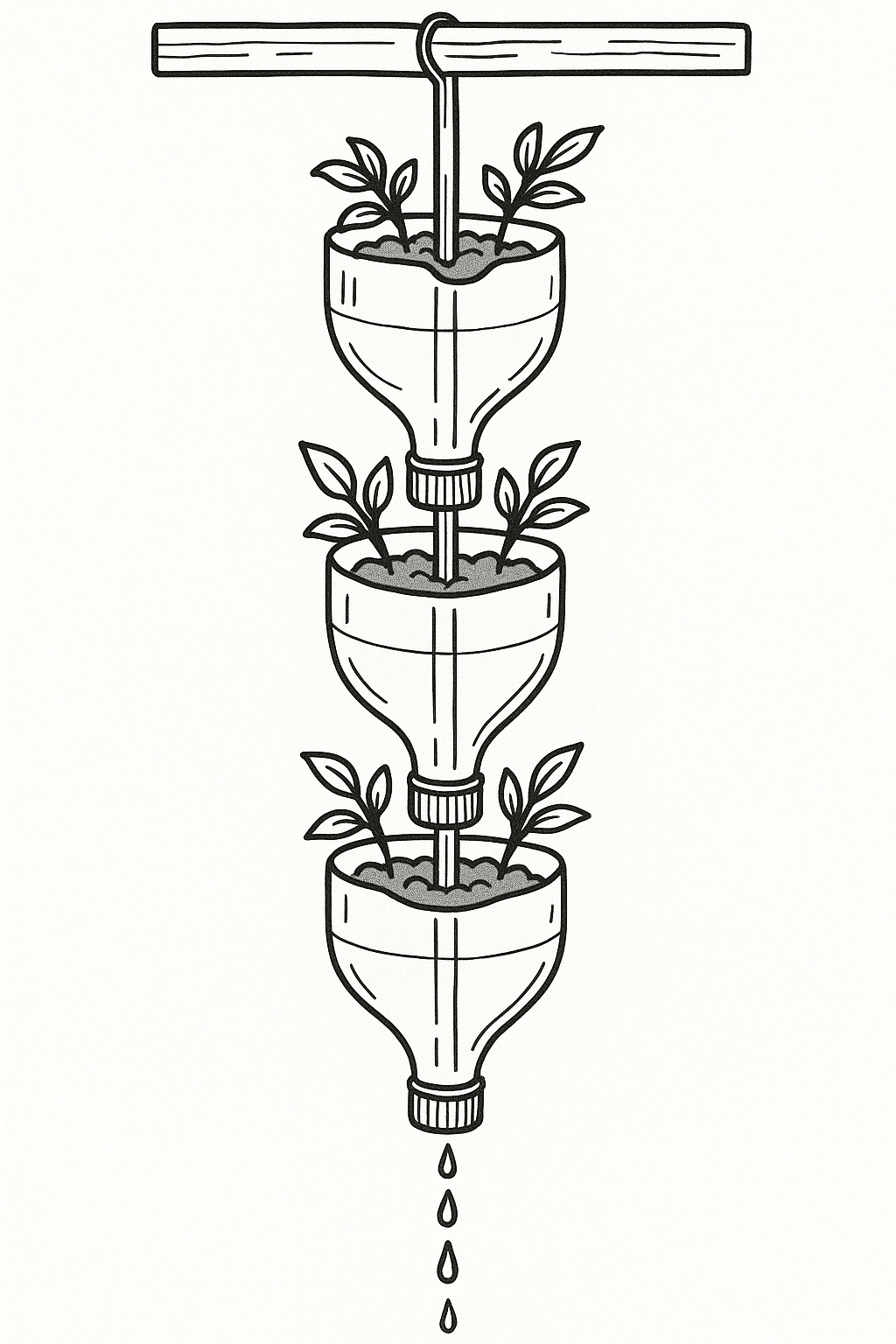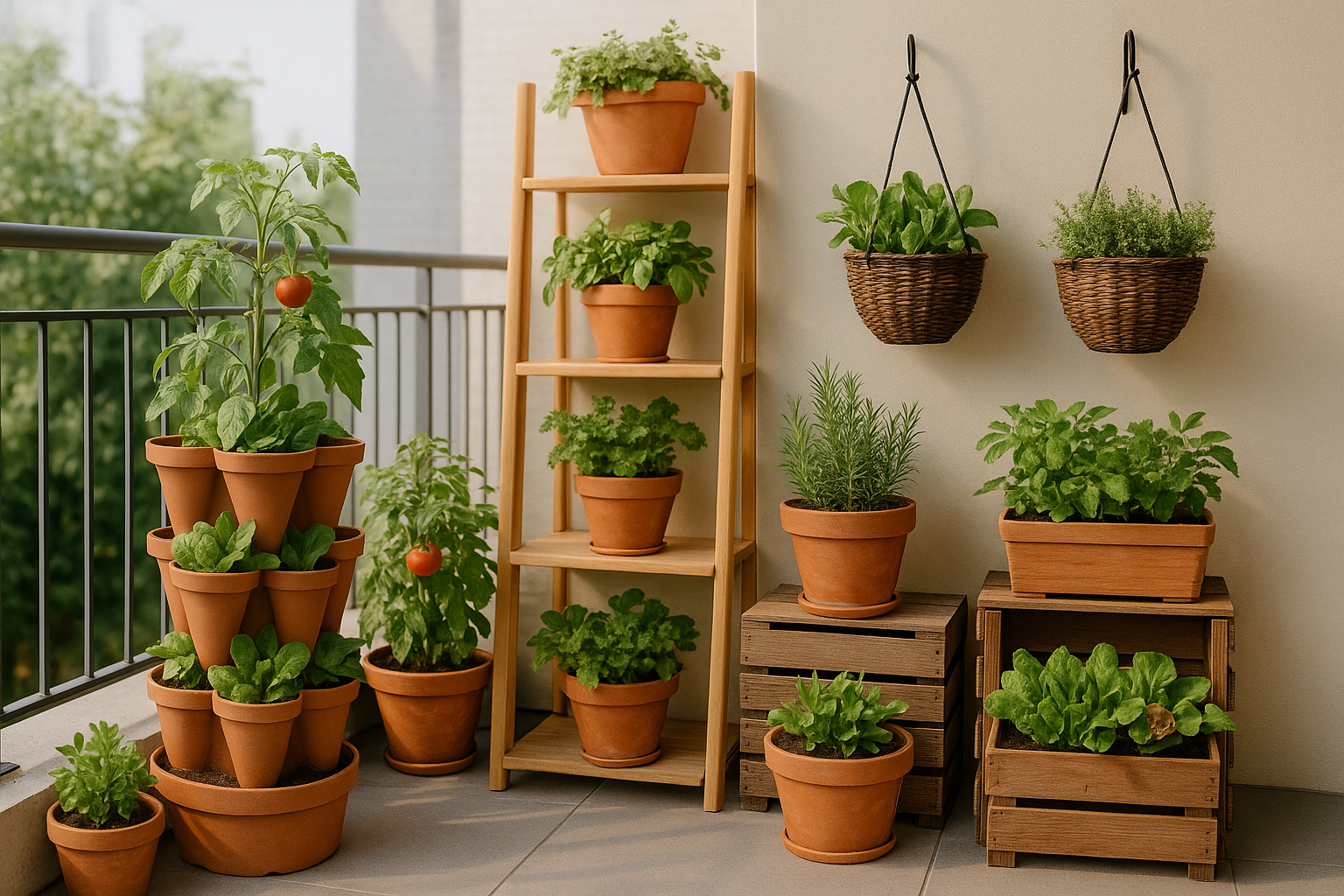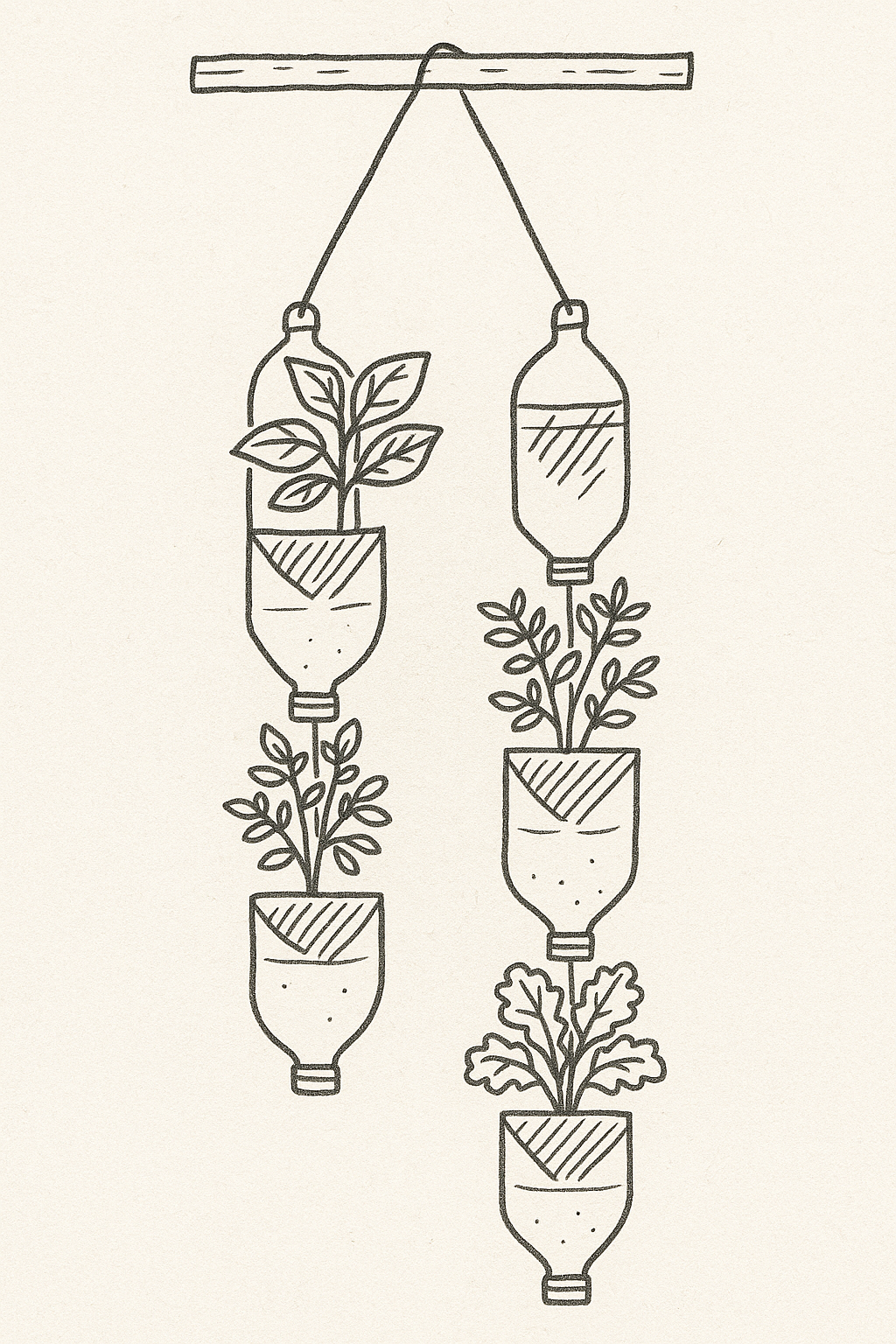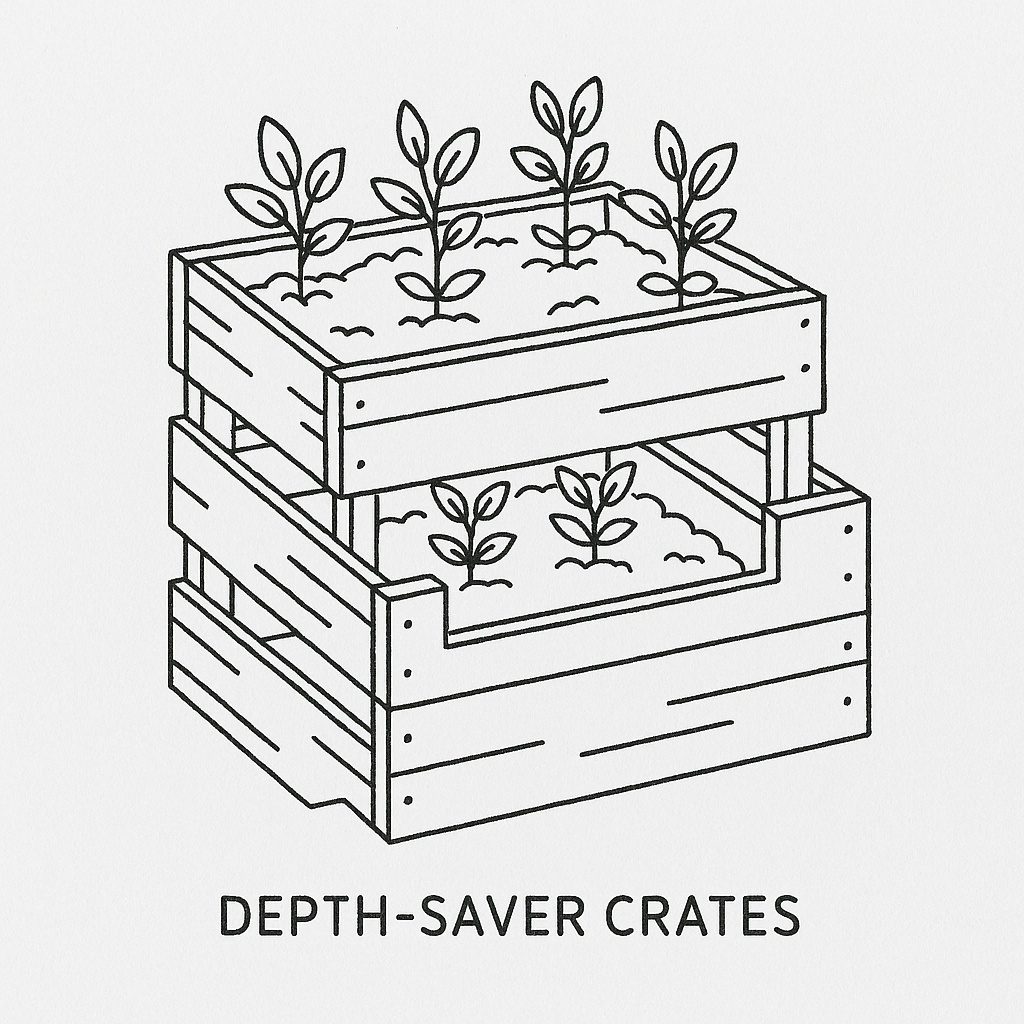
Bottle Tower
Stacked 2 L bottles with side cut-outs; a central wick keeps moisture more even.
- Best for: lettuce mixes, parsley, mint (top), strawberries (sunny).
- Water: top bottle slowly; use a catch tray at base.

Vertical growing, small-space rigs and smart watering for UK conditions.
Grow more in less space with sturdy vertical rigs, “found” containers, smart watering and micro-climate tweaks. All tuned for real UK weather.
Use height with rails, ladders, shelves and trellis. Keep heavy pots low, leafy/herbs higher. Narrow depth, more tiers.
Start seedlings indoors; move outside only when sturdy. Each outdoor slot stays productive and tidy.
Link troughs to one reservoir or sit pots on capillary mats so a single fill supports a whole stack.
Wet compost is heavy, wind multiplies load. Anchor everything. Don’t rely on flimsy fixings.
| Container | Approx. wet weight | Notes |
|---|---|---|
| Window box 60 cm (10–12 L) | 10–14 kg | Metal brackets screwed into brick/joist, plus safety strap/cable tie. |
| Tub 20 L | 18–24 kg | Keep on floor level; use pot feet/spacers for drainage and airflow. |
| Trough 80–100 cm (25–35 L) | 25–40 kg | Support at multiple points; never cantilever off weak rails. |
| Crate stack (3 tiers) | 15–40 kg | Strap to wall ring; heaviest tier at base; anti-tip bracket. |
Drill 6–8 base holes (8–10 mm); add 1–2 cm gravel for stability.
Line sides with corrugated card for insulation on exposed sites.
Best for: tomatoes (dwarf/bush), peppers, bush beans, potatoes (20 L+).
Staple landscape fabric inside; fill 60/30/10 compost/bark/perlite mix.
Add corner posts to stack 2–3 high; strap to wall ring.
Best for: salad mixes, spring onions, parsley, chives, mint (in a sunken pot).
Use deep 112 mm gutter + end caps; drill small base holes every 10–12 cm.
Mount with sturdy brackets; link 2–3 gutters to a single drip line.
Best for: lettuce, coriander, chives, alpine strawberries.
Cut side windows; keep necks as drip points; stack on a cane or threaded rod.
Fill progressively; top bottle is the reservoir; add felt wicks.
Best for: basil, mint, small salads, nasturtiums.

Fix a 4–5 tier ladder to the wall with two brackets to prevent tipping.
Top tiers: herbs; middle: salads; bottom: heavier tubs.
Lay capillary matting on shelves for easy watering.
Attach welded mesh to wall; clip on round pots with hook hangers.
Train peas/beans with soft ties; leave 10–15 cm standoff for airflow.
Two steel rails horizontally; S-hooks for baskets and tools.
Alternate weight along the run; keep heaviest near brackets.
Trough (80–100 cm) with rear trellis; tie climbers from day one.
Great for: dwarf peas, French beans, cucamelon, edible flowers.

Line a shallow tray with matting; pots sit on it and wick water. Refill two or three times a week in summer. Keep trays shaded to slow evaporation.
Use a 25–40 L lidded box. Gravity or a timer feeds 4–8 drippers. Add a simple inline filter, especially when using rainwater.
South: tomatoes/peppers; east: salads/herbs; west: mixed; north: leafy greens and mint. Bounce light with pale walls or a thin aluminium sheet.
Mesh windbreaks slow gusts without creating a sail. Stake early. Tie with soft ties to avoid stem damage.
Keep fleece handy. Wrap stacks at dusk, uncover in the morning. Darker pots warm faster but dry out quicker.

Stacked 2 L bottles with side cut-outs; a central wick keeps moisture more even.

Clip a short rail on a wall or window frame; hang fabric pockets or small pots.

Two shallow crates stacked with liner make a deep, free-draining planter for roots.